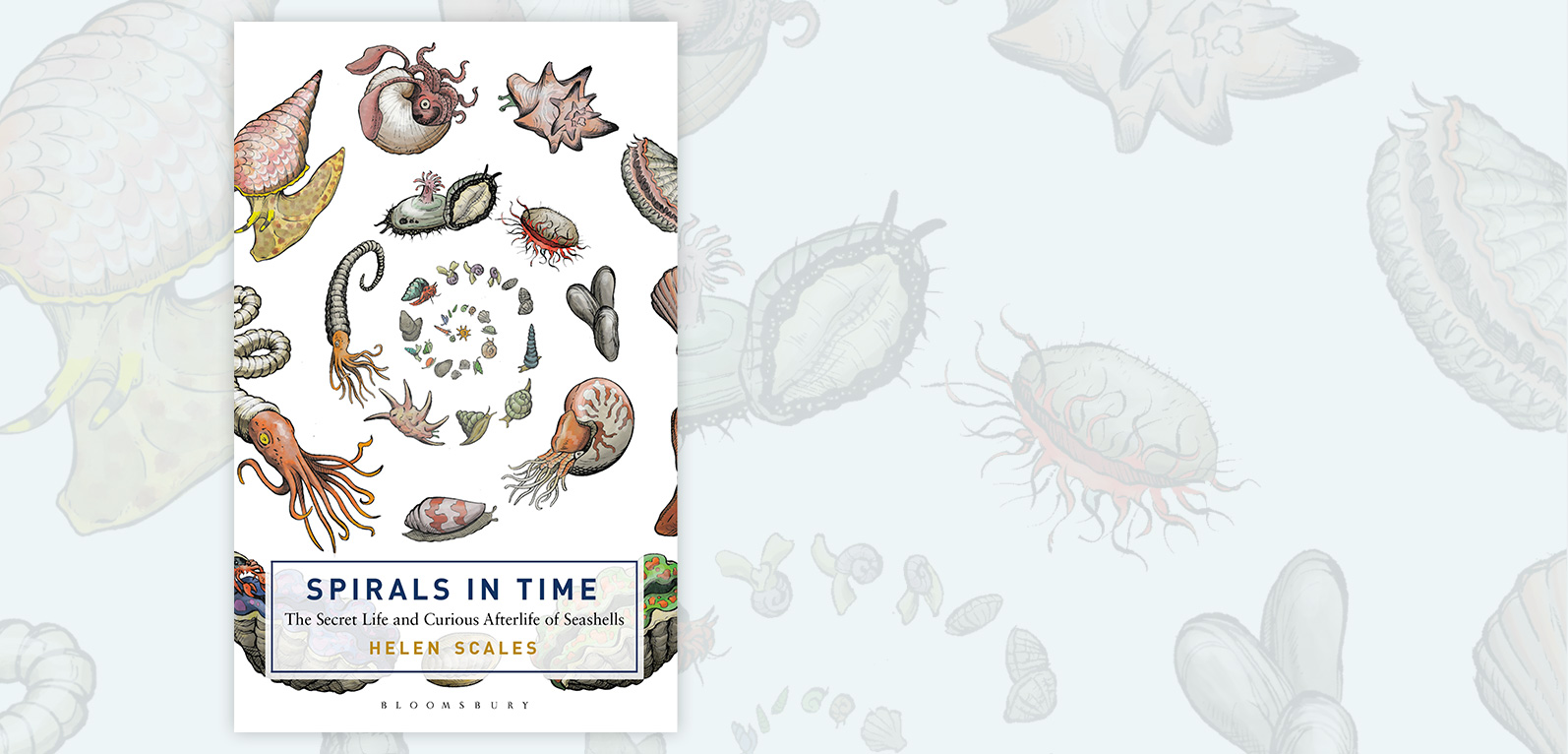Book Review: Spirals in Time
Helen Scales explores the secret life and curious afterlife of seashells.
Article body copy
Anyone who has dipped a toe in the ocean has surely picked up a seashell from the beach. These coastal souvenirs are so commonplace we may forget how little we know about the animals that once inhabited them. “No matter where you are in the world, you will never be far from a mollusk,” writes Helen Scales in Spirals in Time, her eclectic homage to the phylum of creatures that makes seashells. Since their appearance 540 million years ago, mollusks have expanded from their marine origins into fresh water and onto land, and they’ve found their way into human culture the world over.
Scales takes the reader on a dizzying tour of mollusks past and present, beginning with a deep dive into their biology. Not all mollusks make shells: octopi, squid, and slugs are contentedly shell free. But the majority of mollusks—from coiled nautiluses to hinged bivalves, from microscopic sea butterflies to mini-fridge-sized giant clams—are armored. Shells are mainly calcium carbonate laid over a scaffold of protein; they grow in spurts throughout the mollusks’ lives. Scales cites numerous studies that explain the myriad shapes and patterns of seashells, beginning with the observations of the 19th-century mathematician Reverend Henry Mosley, who noted that shells form logarithmic spirals. Nine out of ten shells coil to the right, and the rare left coilers have trouble mating because the rest of their anatomy also skews to the wrong side.
Humans have long been enchanted by seashells and regarded them variously as symbols of purity, fertility, and prestige. Scales traces this fascination through history, describing 100,000-year-old shell necklaces from a Moroccan cave, shell collections excavated from Pompeii, and millions of cowrie shells that became the currency of the British slave trade. She travels to the tiny Mediterranean island of Sant’Antioco to visit the last weavers of “sea silk.” This fiber, called byssus, anchors mussels to the seabed. She looks at how mollusks inspire forward-thinking scientists, who study the paralytic toxin of cone snails to learn about muscle contractions and develop superglues that mimic the secretions that cement mussel byssus to slippery rocks.
Today, mollusks are among the most popular and sustainable seafoods, but their resilience has limits. Annually, people consume 16 million tonnes of mollusks, a US $5-billion industry. Scales visits abandoned Welsh oyster fisheries that collapsed a century ago from overfishing and mangrove forests in The Gambia, where a sisterhood of all-female oyster harvesters has found a balance between supporting their families and protecting crucial habitat. We now understand that oyster beds protect coastlines from storm floods and erosion, but also that their calcium-based shells may be particularly susceptible to acidifying oceans.
A marine biologist turned journalist, Scales displays abundant knowledge and enthusiasm for her subject, but her writing can get bogged down by minutiae. Often the book’s momentum suffers, as when she’s detailing where a specific fossil should fit in the molluskan family tree, or the history of a forgotten marine biologist, or the incremental advances in making synthetic mother-of-pearl. You might not care to know this level of detail, but Spirals in Time will make you glad that someone out there does.
Spirals in Time: The Secret Life and Curious Afterlife of Seashells
By Helen Scales
304 pp. Bloomsbury Sigma

